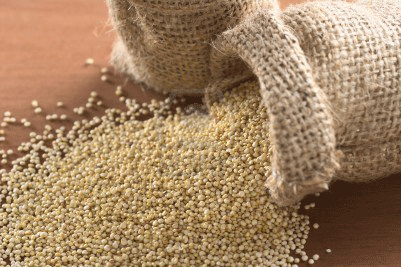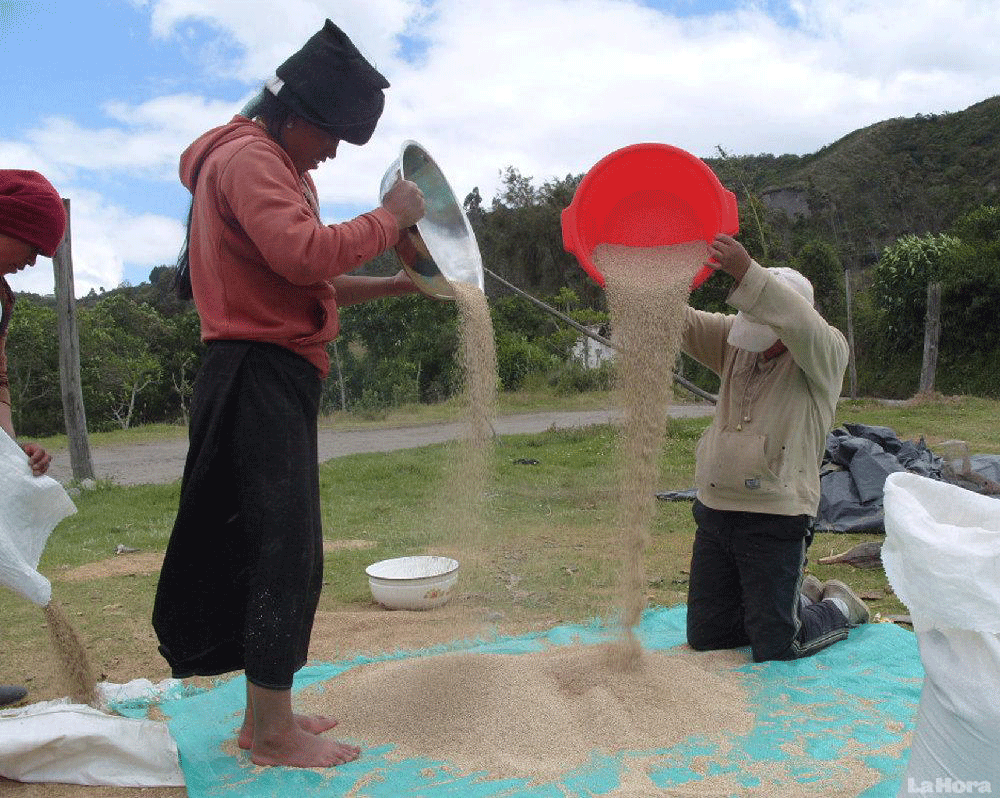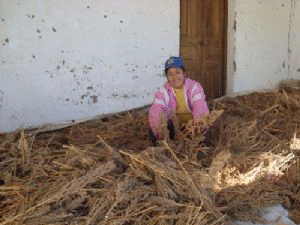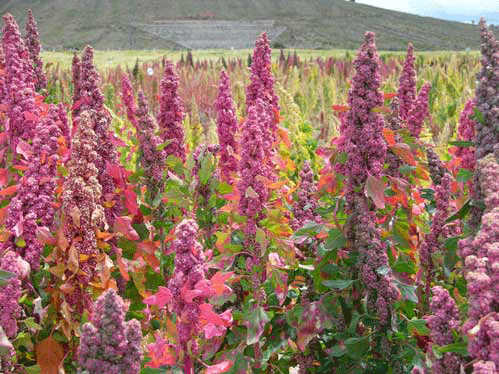 On February 20, 2013, the United Nations declared the official launch of the International Year of Quinoa. Bolivia's President Evo Morales told the UN General Assembly that quinoa "is a gift from Mother Earth," which has turned into one of the proposals by Andean people faced with a food crisis.
On February 20, 2013, the United Nations declared the official launch of the International Year of Quinoa. Bolivia's President Evo Morales told the UN General Assembly that quinoa "is a gift from Mother Earth," which has turned into one of the proposals by Andean people faced with a food crisis.
Quinoa is a herbaceous plant grown in the Andean Altiplano for more than 7,000 years. It is resistant to low temperatures, climate change, diseases and drought; it contains minerals, and its caloric intake is greater than eggs, milk and meat. It does not contain gluten and is the only food plant that contains all the essential amino acids for a healthy diet. These nutritional values make it a food jewel.
 Annual quinoa production in Bolivia has increased from 6,000 to 44,000 tons in ten years. It currently generates more than 50 million dollars in exports, making Bolivia the foremost quinoa exporter.
Annual quinoa production in Bolivia has increased from 6,000 to 44,000 tons in ten years. It currently generates more than 50 million dollars in exports, making Bolivia the foremost quinoa exporter.
Although this plant is native to the Andes, it was not customarily consumed by city residents since it was considered a peasant food. Currently in Bolivia, quinoa is served mainly in tourist and vegetarian restaurants. Therefore the primary consumers are people in countries that import it, like the United States and countries in Europe.
The golden grain of the Andes went from being a product consumed on the farm to an export product, which helped improve living conditions for growers.
 Nevertheless, this economic bonanza has generated some controversy. In effect, quinoa, as a fashionable food in the West, is being blamed for endangering farmers' food sovereignty. This is because land formerly designated for diversified farming for food production and camelid grazing is now being used to sow quinoa. This is causing a reduction in land fertility and increases vulnerability to soil erosion.
Nevertheless, this economic bonanza has generated some controversy. In effect, quinoa, as a fashionable food in the West, is being blamed for endangering farmers' food sovereignty. This is because land formerly designated for diversified farming for food production and camelid grazing is now being used to sow quinoa. This is causing a reduction in land fertility and increases vulnerability to soil erosion.
In addition, conflict for crop lands among growers causes social tensions in the region where quinoa is produced. It even became necessary to militarize these areas to control the conflicts.
Finally, quinoa consumption in Bolivia has been reduced by 34% since its increase in price, which made it inaccessible for people who need to eat this nutritional food that replaces protein supplied by expensive food like meat, eggs and milk. Since quinoa export began, child malnutrition has become chronic in quinoa growing areas.
 So, we conclude that quinoa export makes an essential contribution to economic development. It also helps fight rural population migration to Bolivian, Chilean and Argentine cities. But, as with any intensive agriculture, this phenomenon has negative consequences, as explained above.
So, we conclude that quinoa export makes an essential contribution to economic development. It also helps fight rural population migration to Bolivian, Chilean and Argentine cities. But, as with any intensive agriculture, this phenomenon has negative consequences, as explained above.
Bolivia's current challenge is to achieve an equilibrium between the economic benefits of exporting quinoa and handling food problems among its own people so that production of the "golden grain" can be a positive thing for everyone.


